In the bustling world of ecommerce, a staggering 69% of digital shopping carts are abandoned, leaving a vast ocean of potential customers untouched. These “non-buyers”, who tantalizingly hover at the cusp of purchase decisions, represent a goldmine of opportunity for savvy marketers.
Transforming this segment into loyal customers is a marketing challenge and a strategic imperative. Armed with targeted campaigns and persuasive communication, businesses can unlock the latent potential of this audience, turning hesitation into action and browsers into buyers.
In this article, we will discuss the complete framework of the “Non-Buyers” and how to approach them to turn them into loyal customers.
The Non-Buyers framework includes the following:
- Who are the Non-buyers?
- Communication Frequency
- Success Metric
- Segmented Campaigns
- Dedicated Campaign
- Automations
- Other Additional Channels
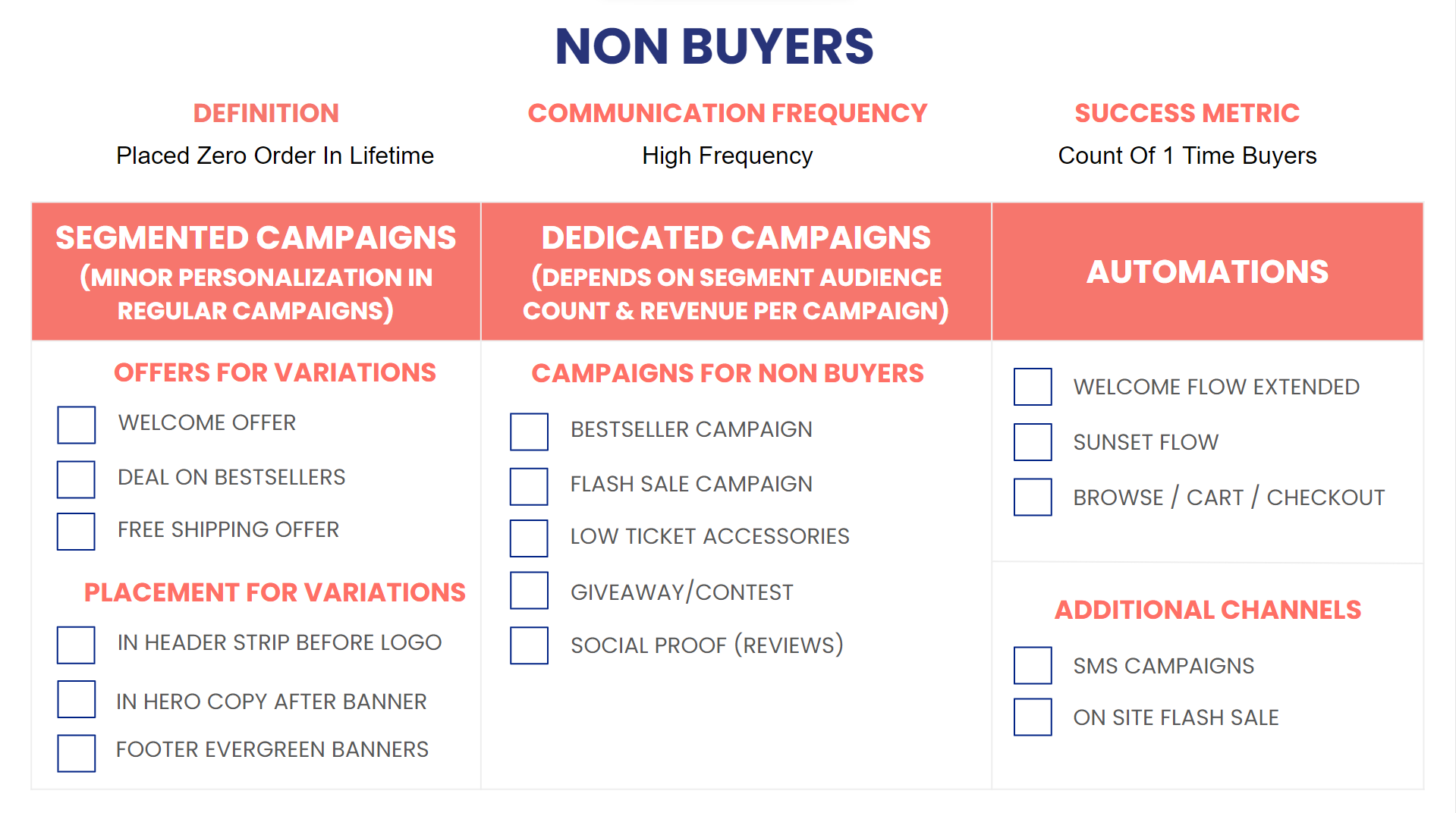
Who are the Non-Buyers?
Non-buyers are individuals who have shown interest in a brand or product by engaging with initial offers but have not yet purchased. They might have signed up for a welcome offer or subscribed to a newsletter but stopped short of placing an order.
Targeting this group requires understanding their motivations and barriers to purchase. They are not just passive observers but potential customers waiting for that extra nudge to make their first purchase.
Ideal Communication Frequency with the “Non-buyers Audience”
Communicating with non-buyers demands a delicate balance. The frequency of communication should be high enough to keep the brand at the forefront of their minds, yet not so aggressive as to alienate them.
Persuasive, consistent messaging that resonates with their interests and needs can gently guide them toward making a purchase. This approach requires a deep understanding of their behavior and preferences to tailor communications that hit the right note.
What’s The Ideal Success Metric
The key metric to track success in converting non-buyers is the count of one-time buyers. Monitoring how many non-buyers transition to making their first purchase provides valuable insights into the effectiveness of engagement strategies.
This metric helps in fine-tuning marketing efforts and understanding what resonates with this particular audience.
Ways To Interact with Non-Buyer Audiences
1. Segmented Campaigns
Segmented campaigns offer a powerful tool to engage non-buyers. By adding a personal touch to regular campaigns, brands can create a connection that feels both personal and relevant.
Suppose you are sending 4 campaigns to complete the customer list every month.
In segmented campaigns, we use the same campaign going out every week. We just make minor changes to the regular campaign and send it to the segmented audience.
It’s quicker and more personalized.
Here’s how to make the most of it:
a. Offers For Variation
- Welcome Offer: Remind non-buyers that a special welcome offer awaits them, creating a sense of exclusivity and urgency. You can apply this to any regular offer campaign that you’re sending to your other set of audiences.
A welcome offer could be a significant discount on the first purchase, a special bundle deal, or exclusive access to certain products. It’s not just about presenting an offer; it’s about making the non-buyer feel special and valued right from their first interaction with your brand. - Deals on Bestsellers: Highlight bestsellers with attractive deals, tapping into the popularity and trust already established by these products.
Showcase products that have already won the trust of many customers. Highlighting these items with attractive deals can reduce the perceived risk for non-buyers.
It’s like saying, “Look, these are our crowd favorites. You can’t go wrong with these!” Tailor these deals based on what the non-buyer has shown interest in, or what is trending in their demographic or geographic area. - Free Shipping Offer: Often, the promise of free shipping can be the final nudge needed for conversion. For non-buyers, the offer of free shipping on their first purchase can be the deciding factor in converting them into buyers.
This offer can be presented as an exclusive, limited-time opportunity to enhance its appeal. It’s crucial to communicate this offer clearly and early in the engagement process to ensure it’s seen as a valuable, cost-saving benefit.
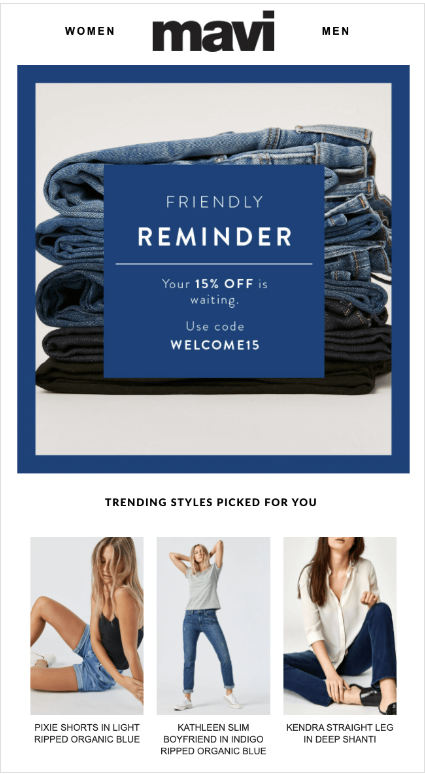

b. Placement of Offers for Maximum Visibility
Strategic placement of offers is key to catching the non-buyers attention:
- Header Strip of the Email Campaign– The header strip is the first thing a recipient sees upon opening an email. Placing an offer for non-buyers here ensures immediate visibility.
Use bold, attention-grabbing text and colors to make the offer stand out. The messaging should be concise yet compelling, creating an immediate interest in what the email contains. - Hero Copy and Banner – The hero section of an email is the primary visual and textual area that appears immediately after the header. Utilize this space to create an emotional connection with compelling visuals and copy.
Use high-quality images and persuasive copy that resonates with the non-buyer’s needs and desires. This section should highlight the offer in a way that aligns with the overall theme and aesthetic of the email, ensuring a seamless and engaging user experience. - Footer Banner of the Email- A final reminder of the Welcome Offer, Free Shipping, or Deal on Bestsellers as they end reading the email can be effective.
The footer of the email acts as a final reminder of the offer as the reader scrolls through the content. This placement is crucial for reinforcing the message and prompting action.
It’s often where call-to-action (CTA) buttons are located, so coupling the variation offer for non-buyers with a clear CTA can effectively guide the non-buyer toward making a purchase.
The design and copy in the footer should be clear, concise, and aligned with the overall message of the email.
2. Dedicated Campaigns for Non-buyers
Creating campaigns specifically tailored for non-buyers can yield significant results. The approach depends on the audience segment count and revenue per campaign.
To persuade your non-buyer audience, you can go aggressive with the following campaigns:
a. Bestseller Email Campaign
Highlighting bestsellers can reassure non-buyers about product quality and popularity. A Bestseller Email Campaign specifically targets non-buyers by showcasing the most popular and highly rated products.
This approach leverages social proof, suggesting that these well-loved items are a safe and satisfying choice. The campaign can highlight the unique features, customer reviews, and ratings of these top-selling products.
To make it more effective, the messaging should create a narrative around why these products are favorites, potentially including testimonials or user-generated content. It’s about telling a compelling story that connects the non-buyer with the product.

b. Flash Sale Email Campaign
A limited-time offer creates urgency, encouraging immediate action. Flash Sale Campaigns create a sense of urgency and exclusivity, which can be particularly effective in converting non-buyers.
These campaigns should feature time-sensitive offers on select products, creating an impulse to act quickly. The key here is to communicate the limited nature of the sale — both in time and quantity.
Visual elements like countdown timers and vibrant graphics can enhance the urgency. The campaign should be straightforward, focusing on the discounts and how the non-buyer stands to benefit by acting fast.

c. Low Ticket (priced) Accessories Campaign
Offering lower-priced items can be a less intimidating entry point for first-time buyers. The idea is to reduce the barrier to entry for making the first purchase.
By showcasing affordable accessories or add-on items, the brand can entice non-buyers to start their buying journey with a smaller commitment.
This approach can include cross-selling strategies, suggesting affordable items that complement previously browsed products. The messaging should focus on the value proposition of these lower-cost items, emphasizing their quality and utility despite the lower price.

d. Social Proof Email Campaign
A Social Proof Campaign uses customer testimonials, reviews, and user-generated content to build trust and credibility.
For non-buyers, seeing real feedback from satisfied customers can be a powerful motivator. This campaign can feature stories or quotes from customers, photos of customers using the products, or aggregated reviews and ratings.

The aim is to demonstrate the value and satisfaction that others have found in the products, thereby reducing the perceived risk of purchasing.
e. Giveaway Contest Email Campaign
Engage non-buyers with the excitement of a contest, increasing interaction and interest. The Giveaway Contest Campaign engages non-buyers by offering them a chance to win products or special deals.
This type of campaign creates excitement and encourages interaction with the brand. The key to a successful giveaway is to make entry easy but also tied to some form of engagement, like signing up for a newsletter, sharing content on social media, or even just browsing certain products.
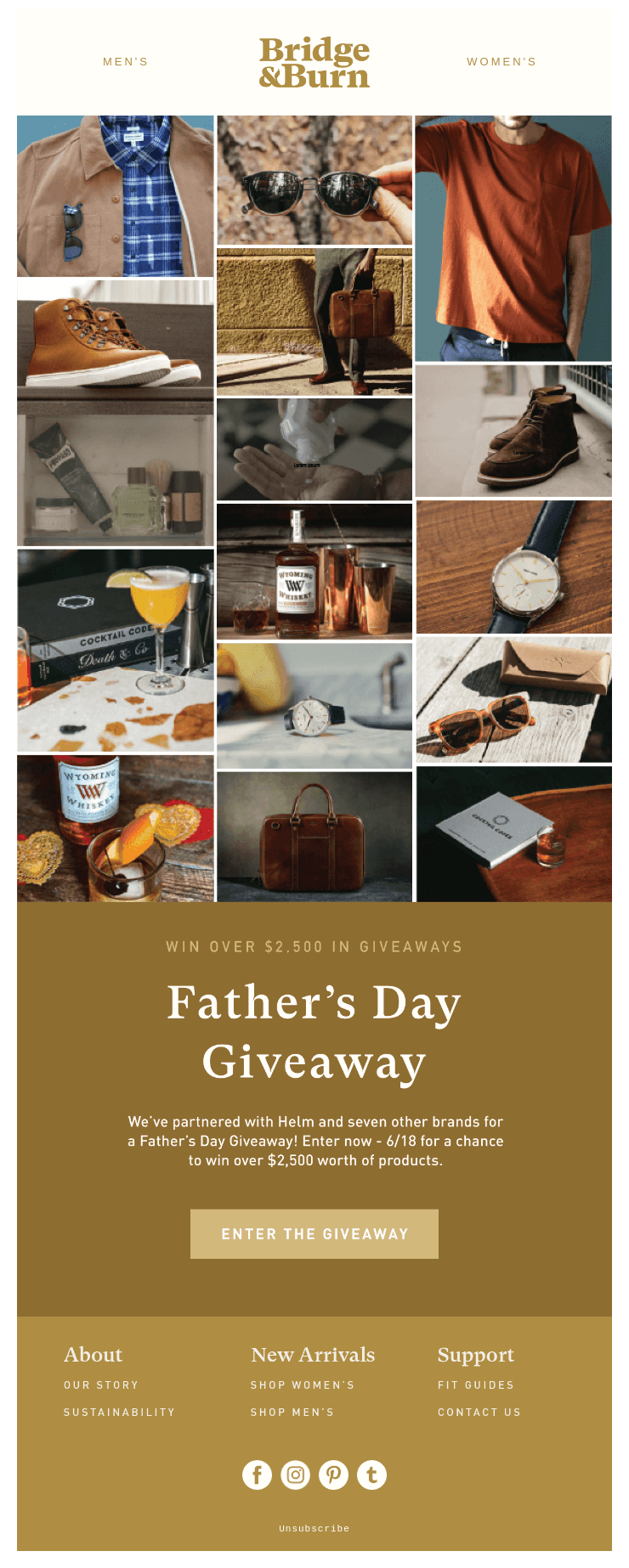
The campaign should highlight what’s to be won and how easy it is to participate, making it an enticing proposition for a non-buyer.
3. Automation- Engaging Non-Buyers Through Automated Marketing Flows
While converting non-buyers into loyal customers, automation plays a pivotal role. Sophisticated automated marketing flows enable brands to deliver personalized, timely, and persuasive content, nudging non-buyers closer to their first purchase.
Let’s explore three key automated flows that will go best for the non-buyers:
a. Welcome Flow Extended
The Extended Welcome Flow is a series of automated communications that goes beyond the initial welcome email.
It’s designed to nurture non-buyers by gradually introducing them to the brand, its values, product range, and unique selling propositions. The flow can start with a warm welcome message, followed by emails that educate the non-buyer about the brand, showcase customer stories, and highlight bestsellers or new arrivals.

Personalization is crucial here; the content should resonate with the non-buyer’s interests and behavior. Over time, these emails can include targeted offers or incentives to make that first purchase. The key is to maintain engagement without overwhelming the recipient, providing value in each interaction.
b. Sunset Flow
The Sunset Flow targets non-buyers who have remained inactive over a certain period. This flow is crucial for re-engaging those who might have lost touch with the brand.
The first step is to identify the right time to trigger this flow – too soon, and you risk appearing pushy; too late, and the non-buyer might have lost interest entirely.
The Sunset Flow can begin with a ‘We Miss You’ message, gently reminding the non-buyer of their interest in the brand.
Following emails can include special comeback offers or updates on what’s new since they last engaged. The tone should be friendly and inviting, emphasizing that they’re valued and missed.
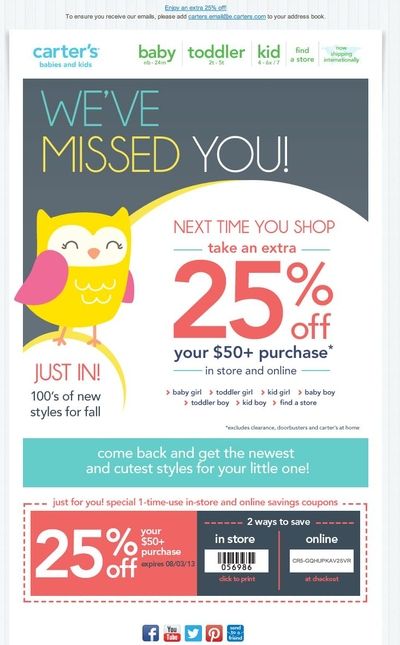
c. Browse, Cart & Checkout Abandonment Flow
This flow is crucial in recapturing the interest of non-buyers who have shown a high intent to purchase but didn’t complete the transaction.
The Browse Abandonment Flow activates when a non-buyer views products but leaves without adding anything to the cart. It can send reminders or additional information about the products they viewed.
The Cart Abandonment Flow triggers when items are added to the cart but the purchase isn’t finalized. This flow can include reminders of what’s in their cart, coupled with reviews or testimonials of those products.
The Checkout Abandonment Flow takes over when a non-buyer initiates the checkout process but drops off before completing the purchase. This flow might address potential concerns like payment security and return policies or offer assistance in case of technical issues.
Each of these automated flows serves a distinct purpose in engaging with non-buyers. By combining timely communication, personalization, and persuasive content, these automated strategies work synergistically to guide non-buyers toward making their first, hopefully of many, purchases.
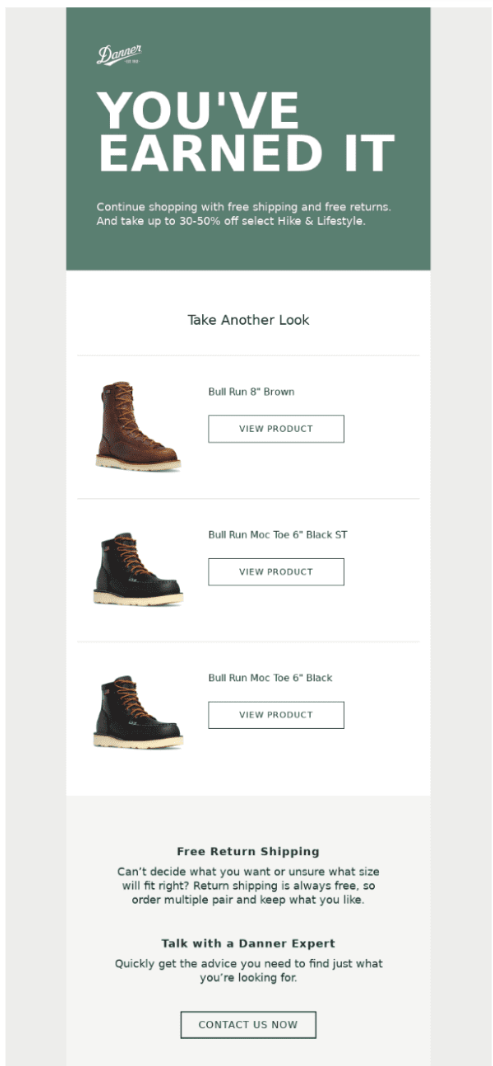
4. Other Additional Channels
Expanding beyond email, there are additional channels that can effectively target non-buyers, nudging them toward their first purchase.
Let’s explore two potent strategies:
a. SMS Campaign
SMS campaigns offer a direct and personal way to reach non-buyers. With higher open rates than emails, SMS can be a powerful tool for immediate impact.
This channel is ideal for short, compelling messages that create urgency or offer exclusive deals. For instance, sending an SMS about a limited-time offer or a special discount exclusive to SMS subscribers can prompt quick action.
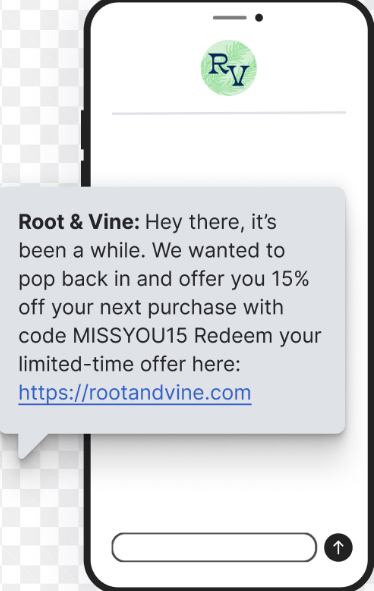
The key is to keep messages concise, engaging, and relevant, ensuring they provide immediate value. Personalization, such as addressing the recipient by name or referencing their previous interactions with the brand, can enhance the effectiveness of the campaign.
b. Onsite Flash Sale
Onsite flash sales are an exciting way to convert non-buyers who are already browsing your website. By creating a sense of urgency and exclusivity, flash sales can encourage immediate purchases.
These sales can be advertised through pop-ups or banners on the website, targeting visitors who might be non-buyers. Highlighting the limited nature of the sale, both in terms of time and product availability, can spur non-buyers into action.
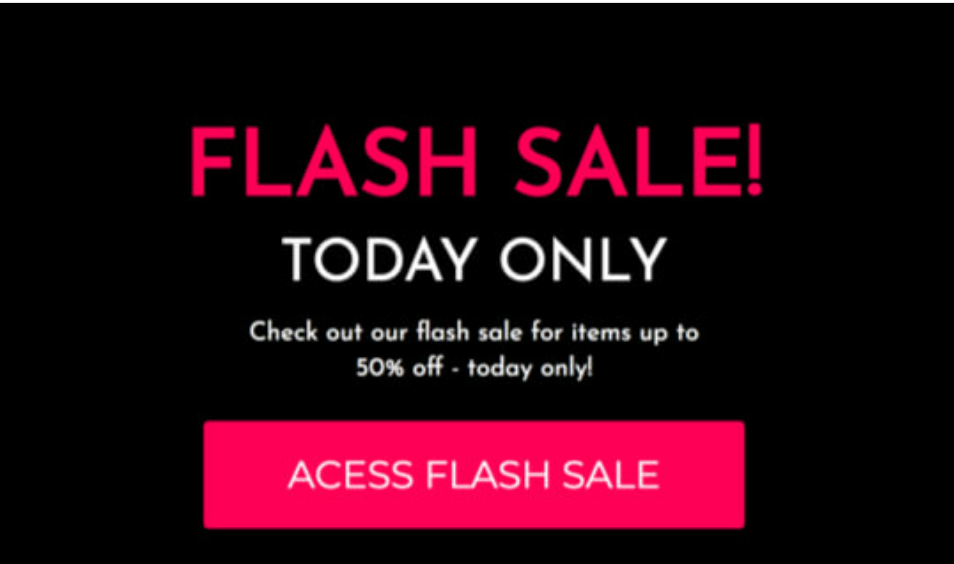
The sale can feature special discounts, bundle deals, or access to exclusive products, tailored to attract non-buyers based on their browsing history or preferences indicated during sign-up.
Conclusion
Engaging non-buyers and converting them into loyal customers is a nuanced art that requires a strategic blend of communication, personalization, and timing.
Through dedicated campaigns, automated flows, and additional channels like SMS and onsite flash sales, brands can effectively reach and resonate with this critical audience segment. The key lies in understanding the unique preferences and behaviors of non-buyers and tailoring interactions to address these insights.
Whether it’s through segmented email campaigns, persuasive SMS messages, or exciting onsite sales, each approach plays a vital role in guiding non-buyers toward their first purchase.
By consistently providing value, creating a sense of urgency, and fostering a personal connection, businesses can transform non-buyers into loyal advocates, unlocking a new realm of growth and customer loyalty.
